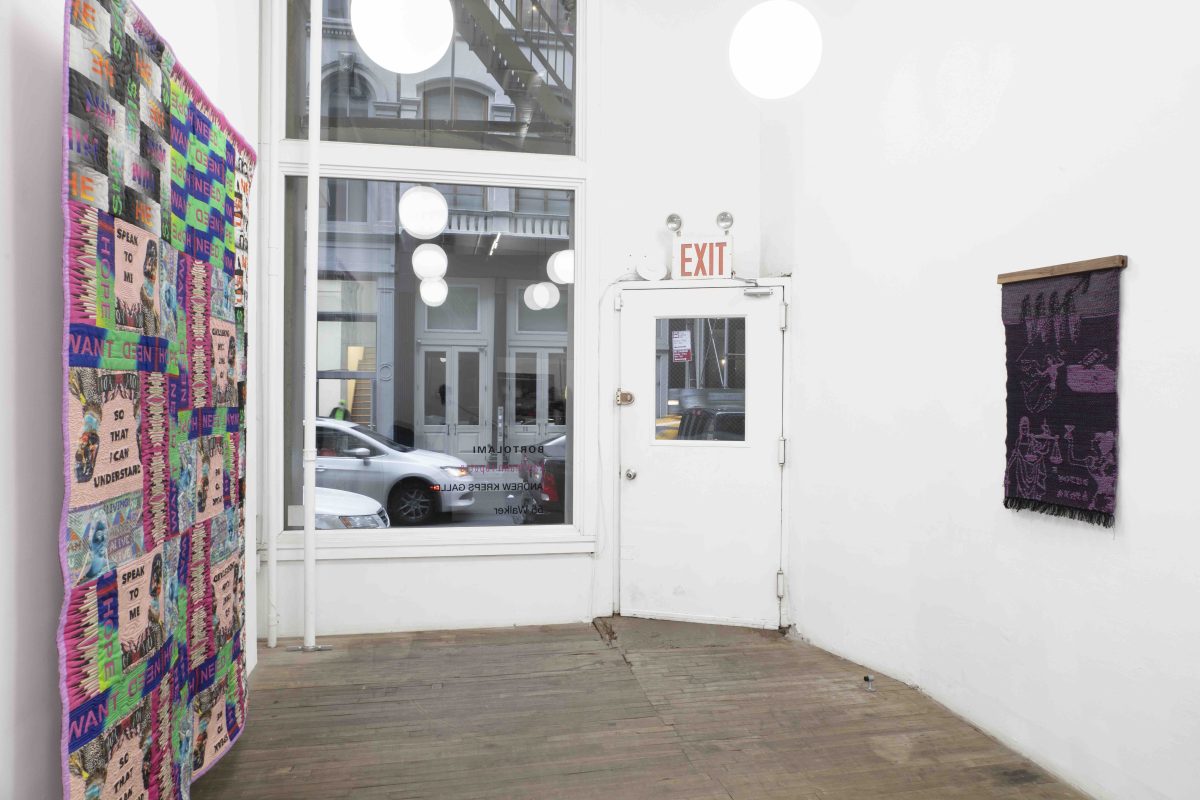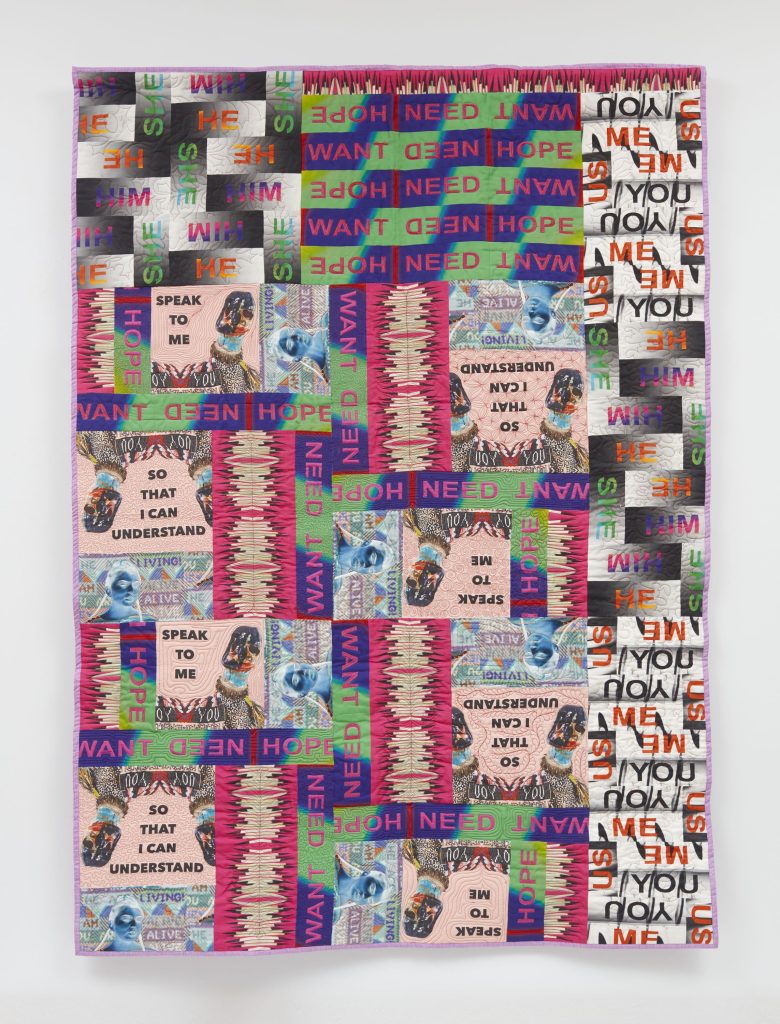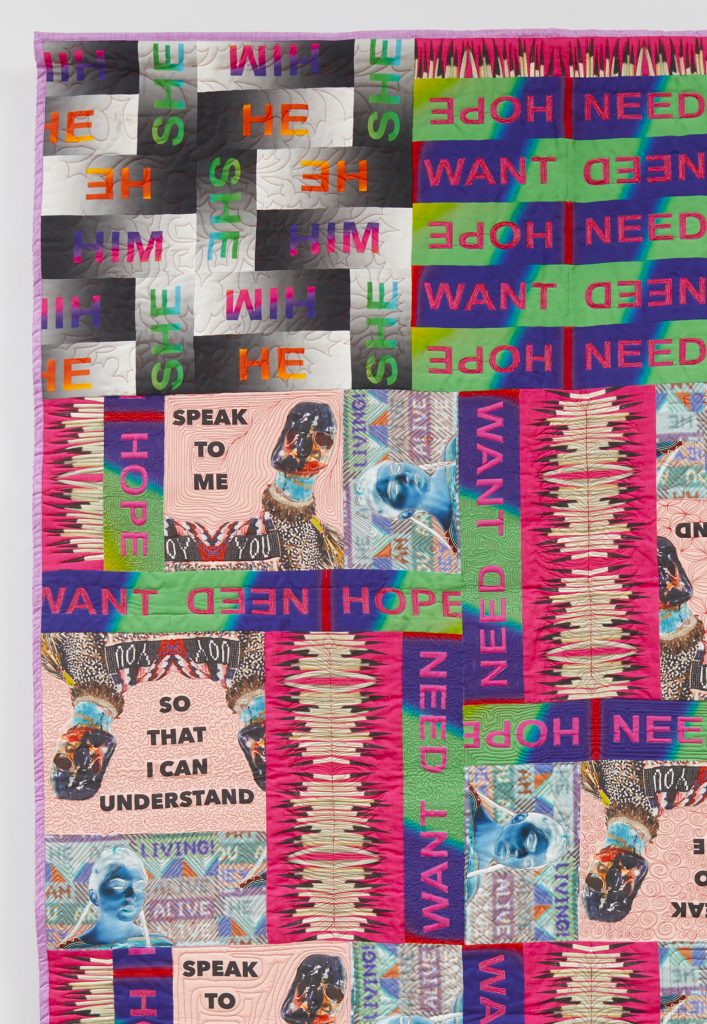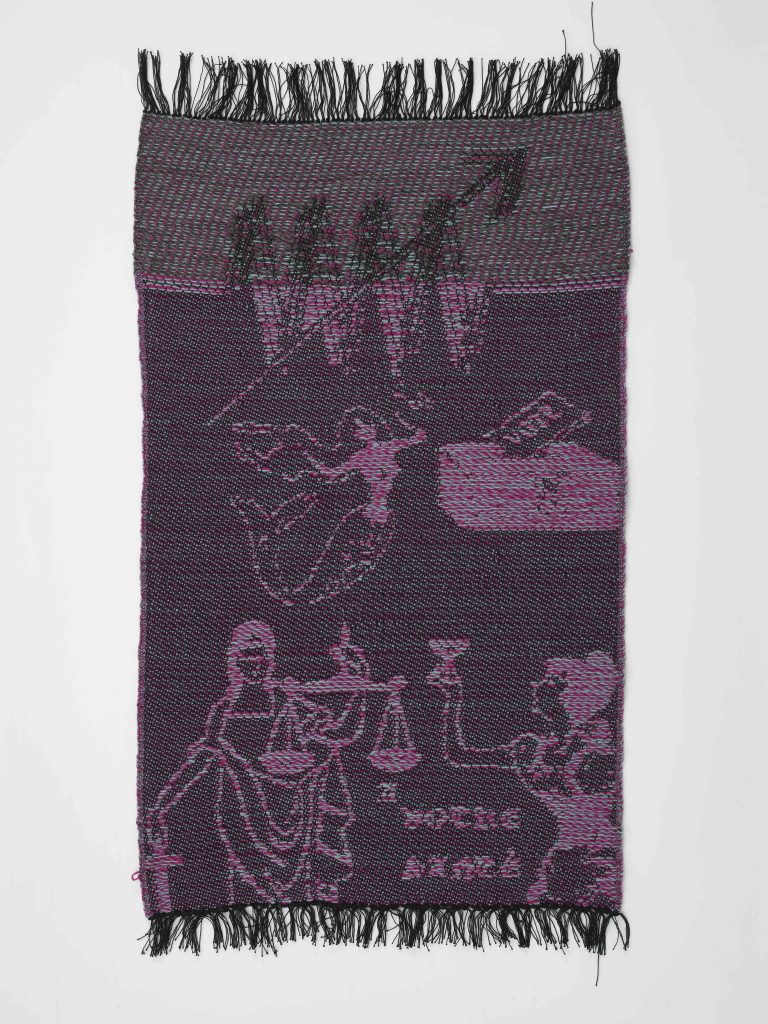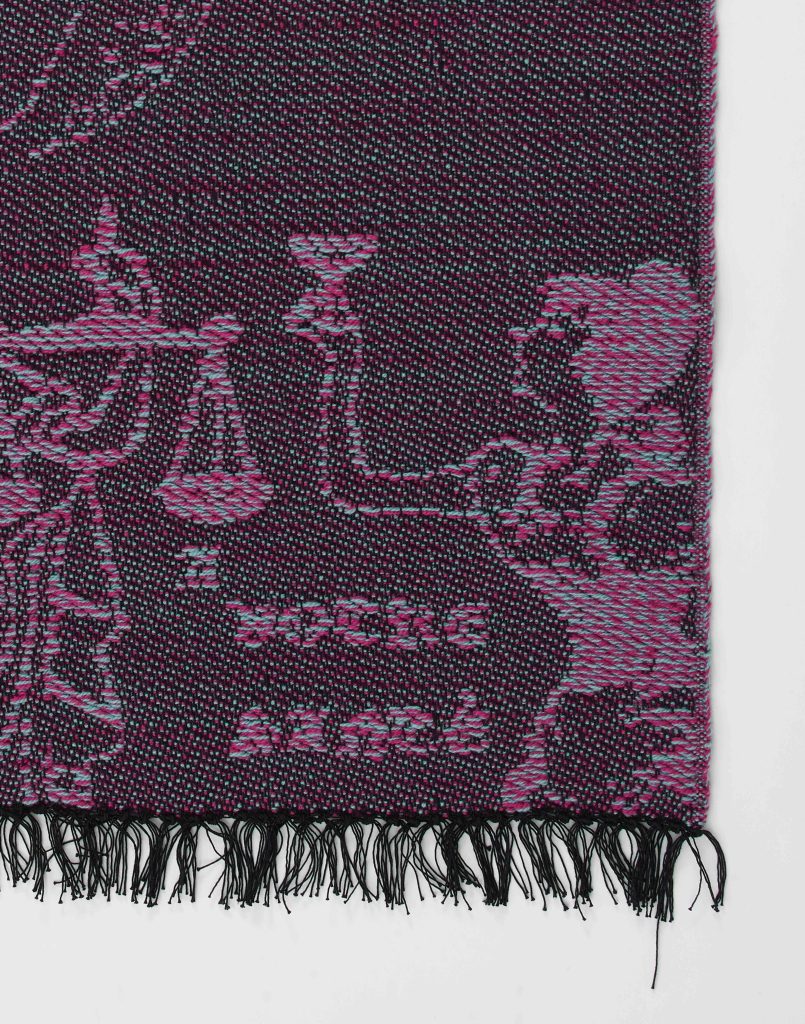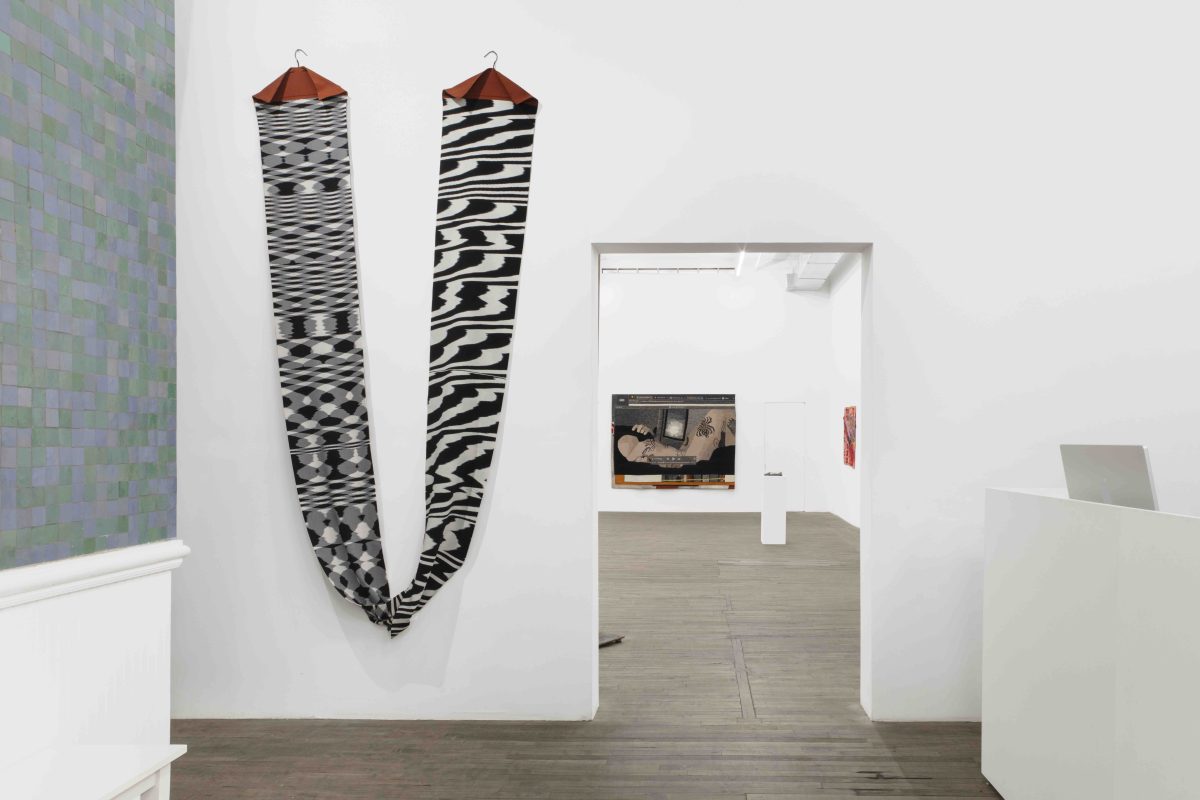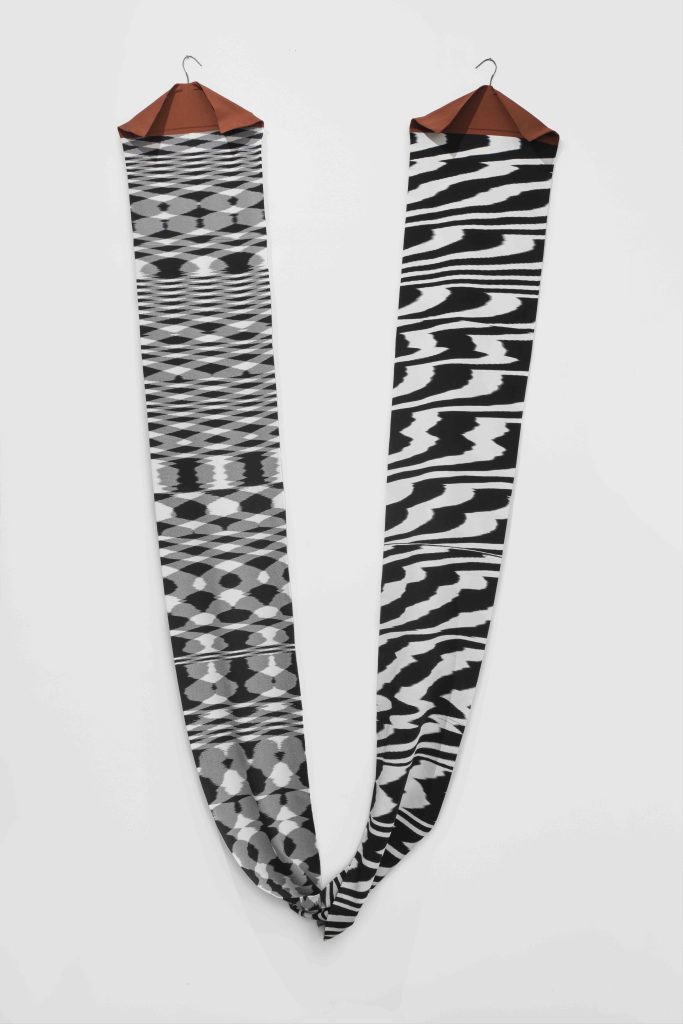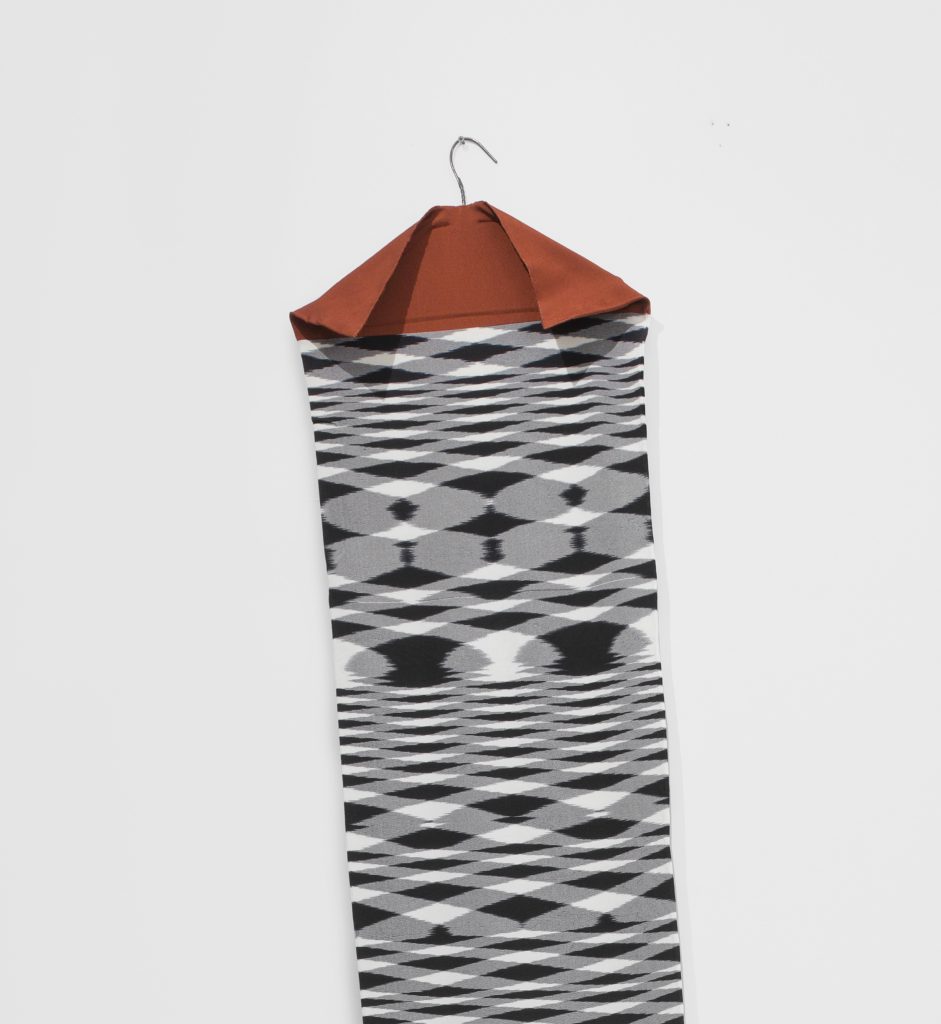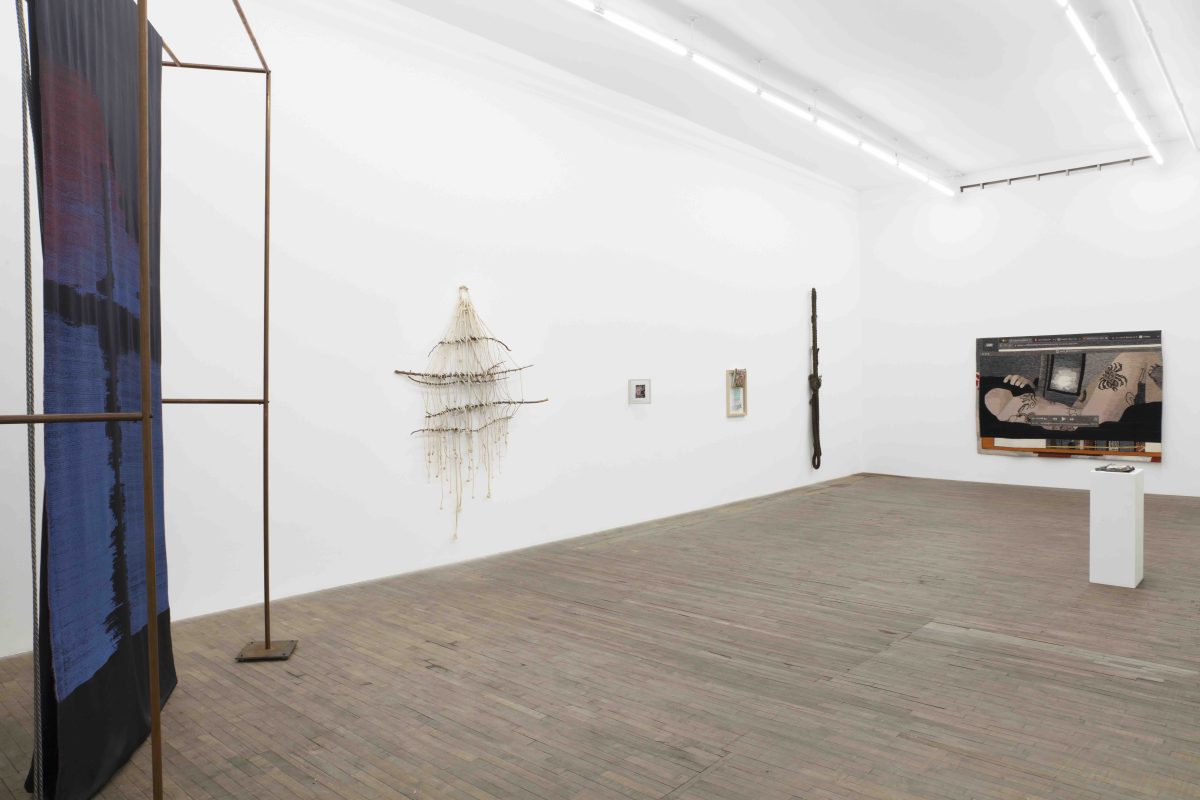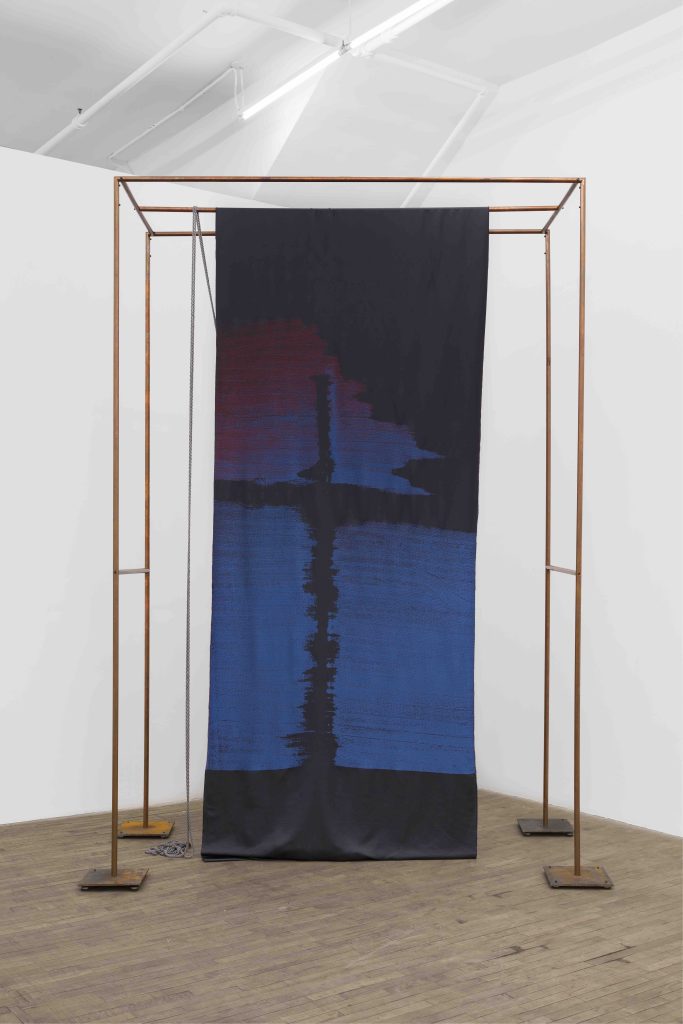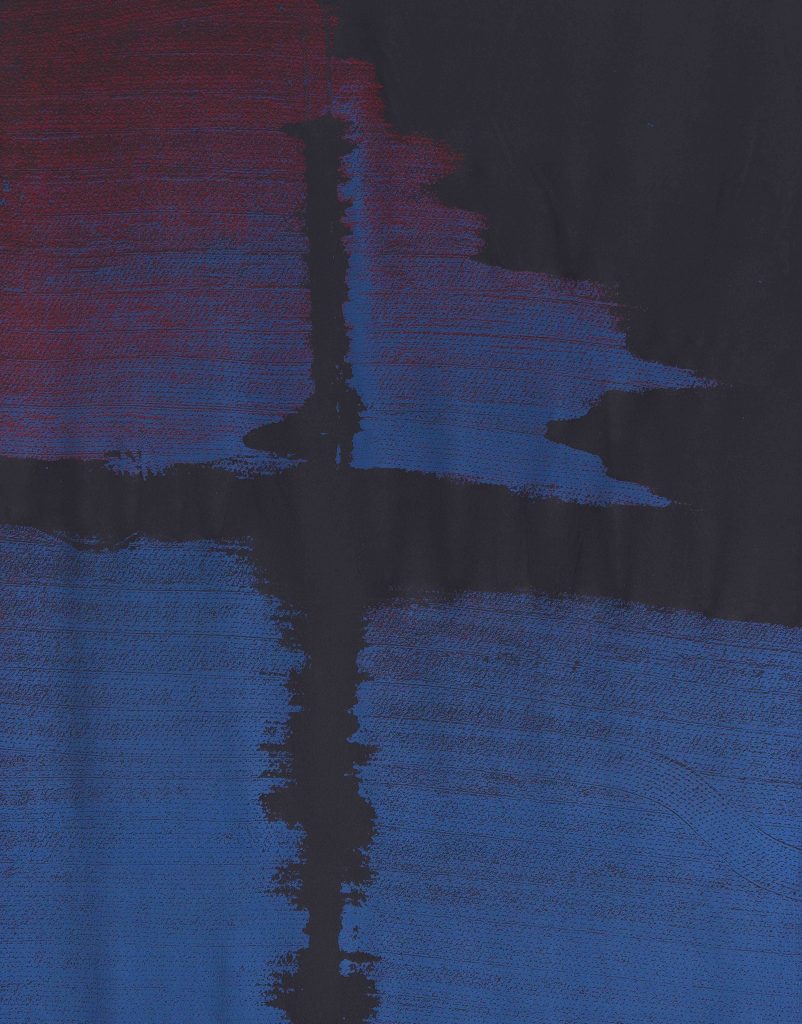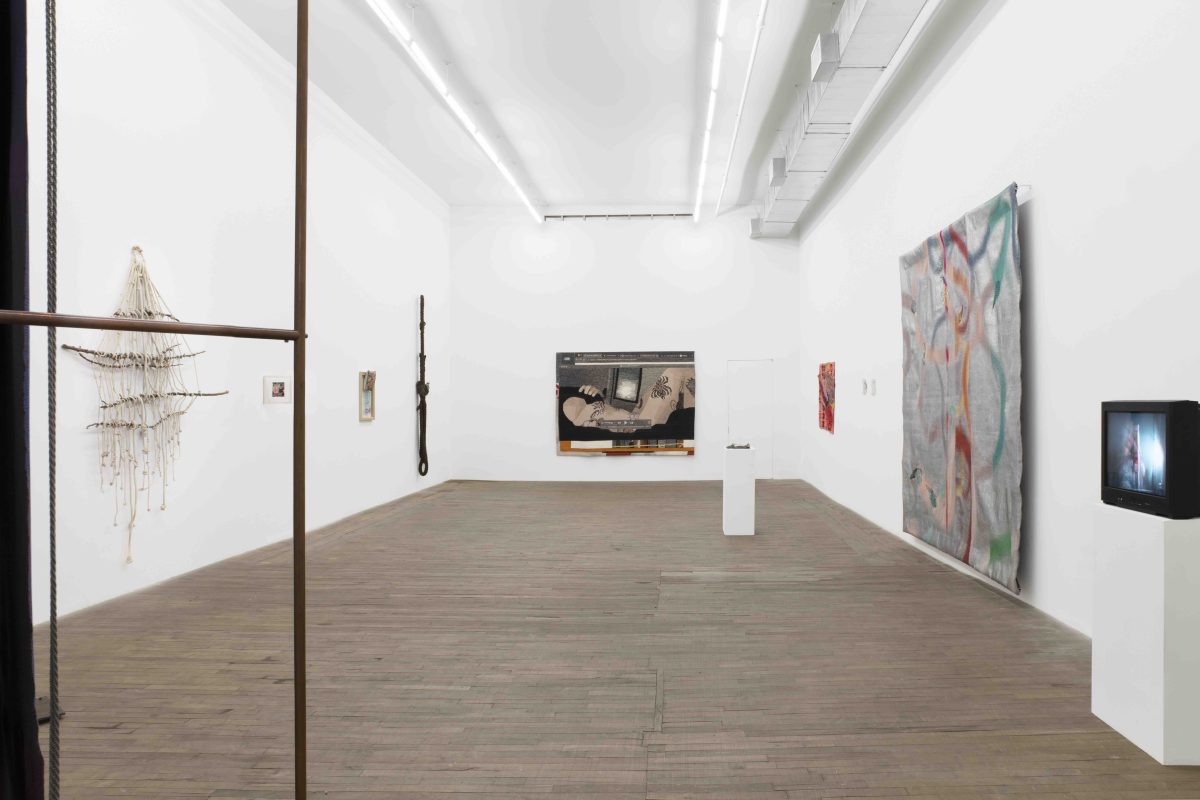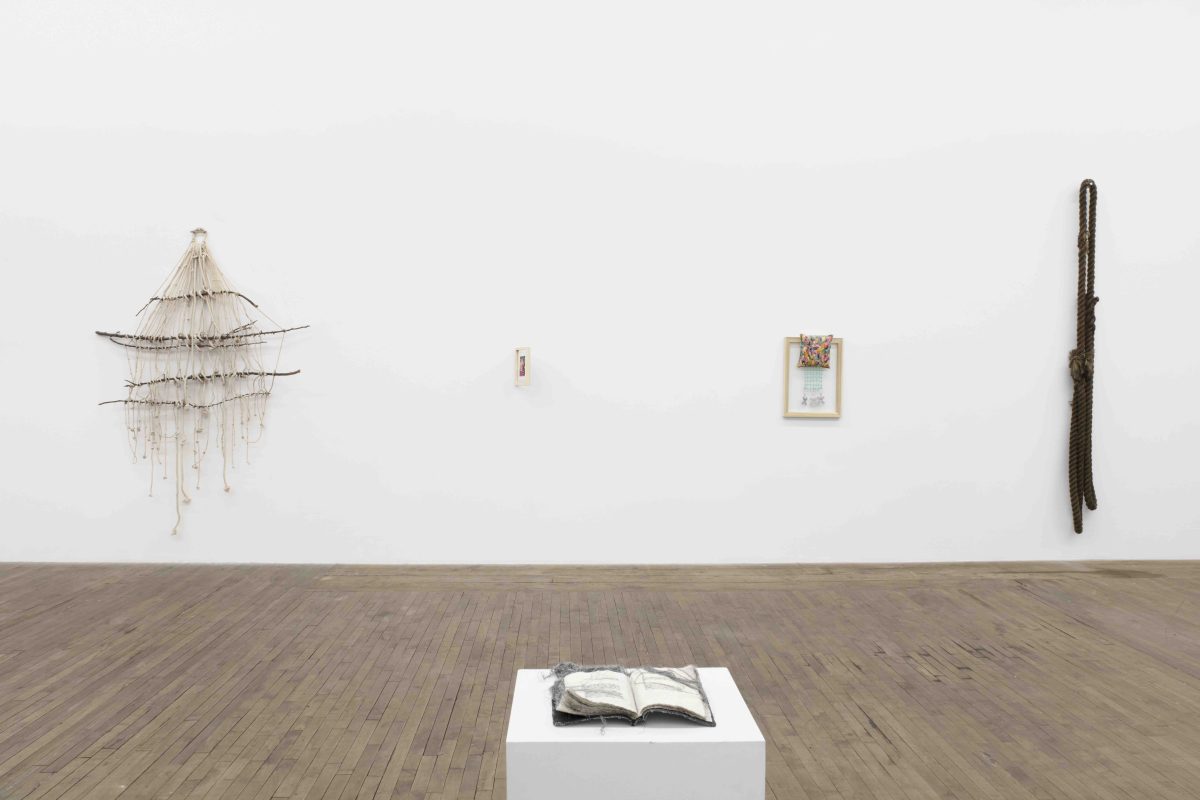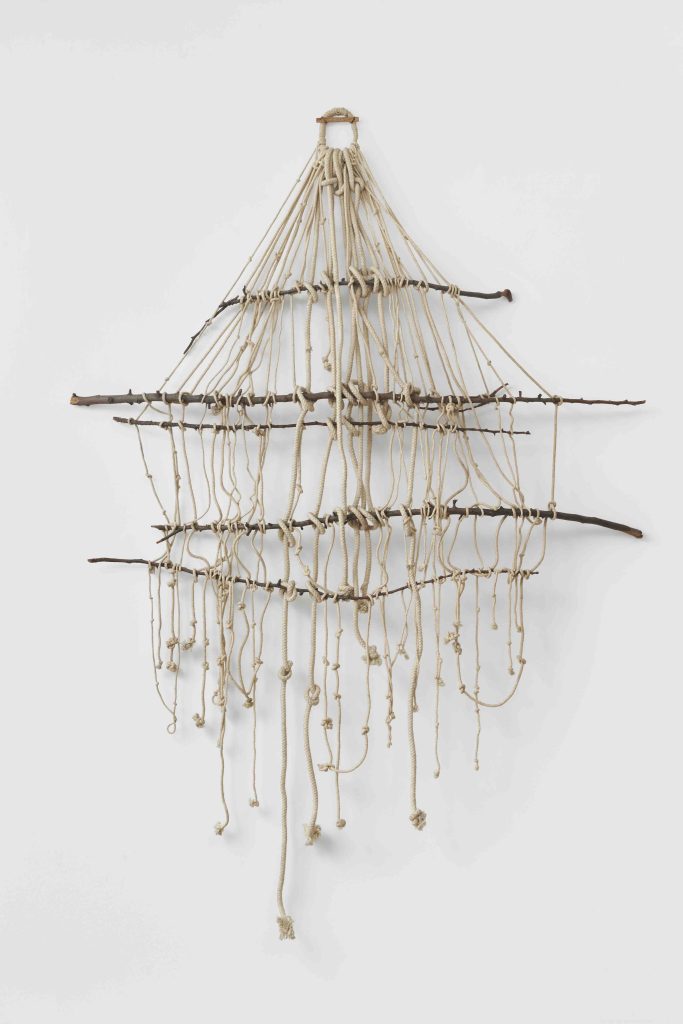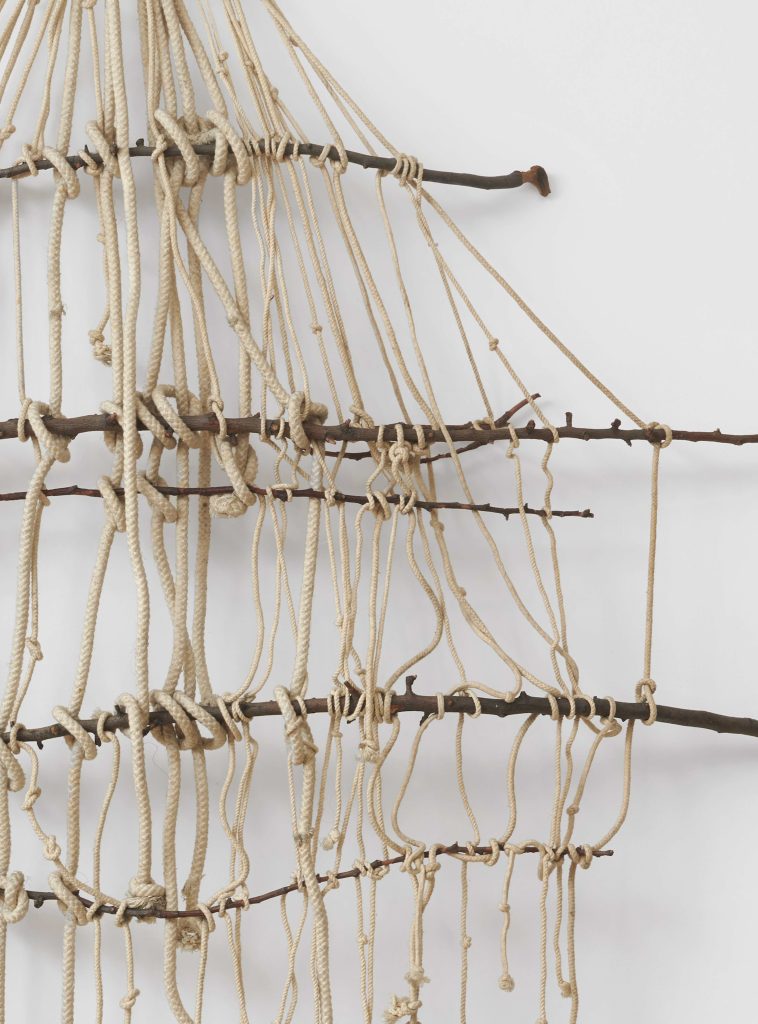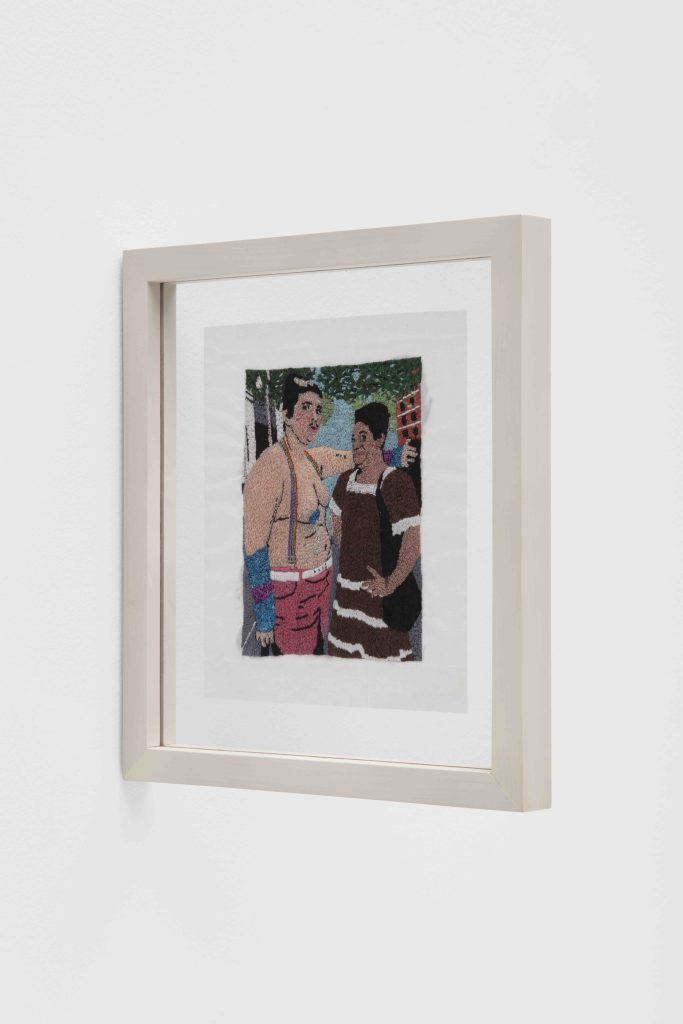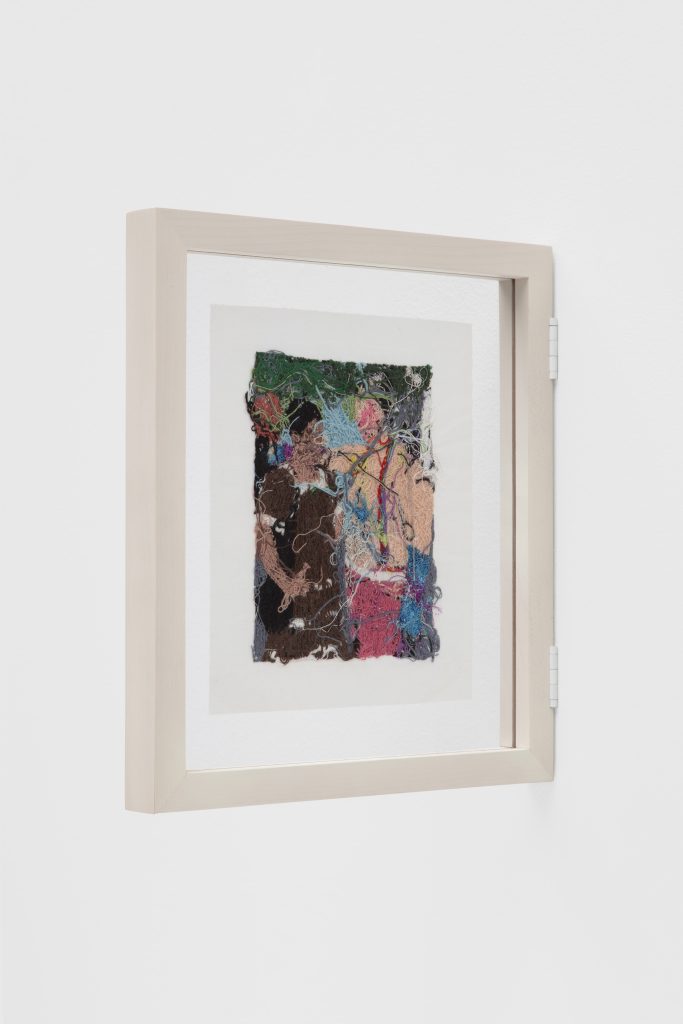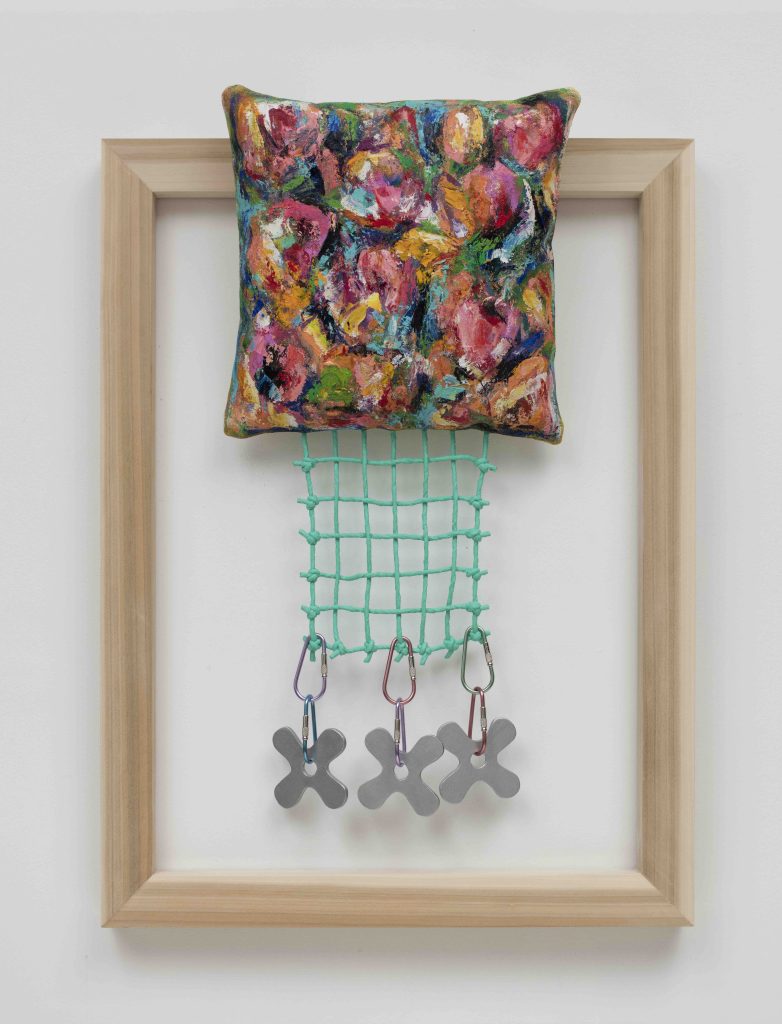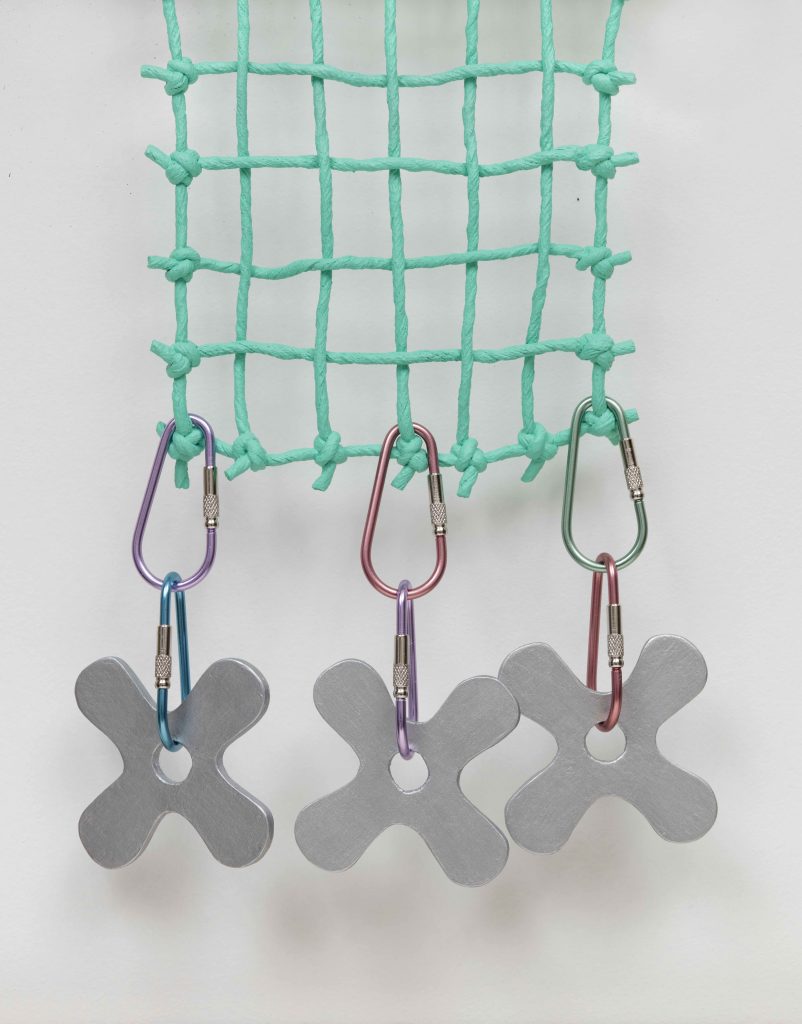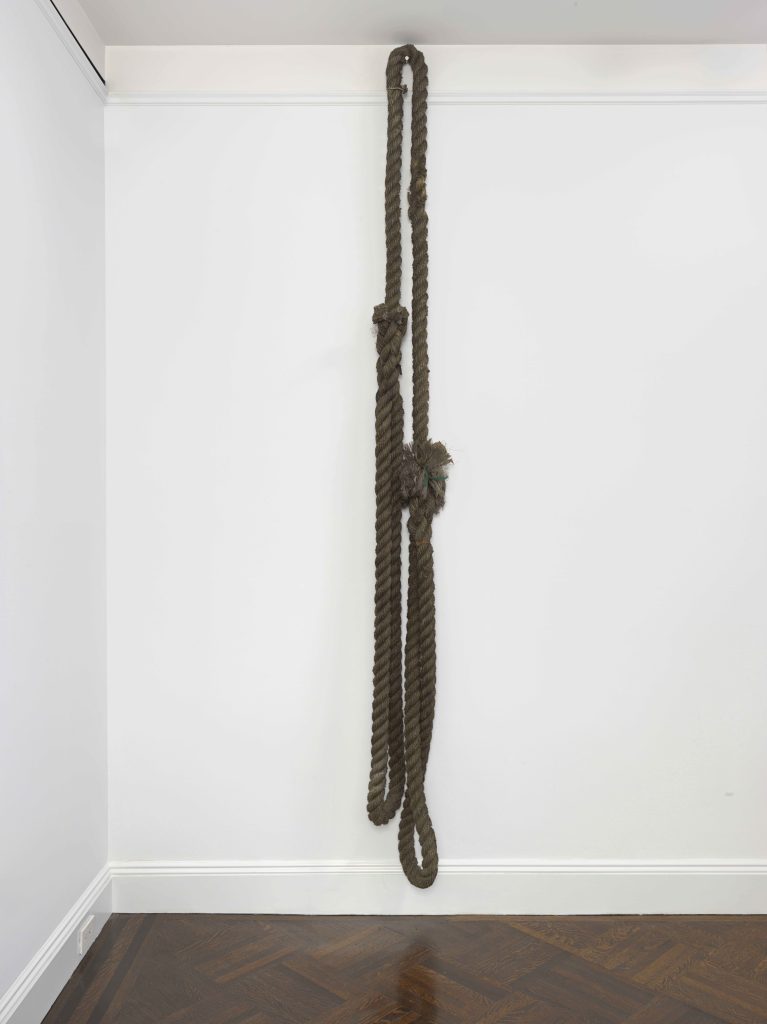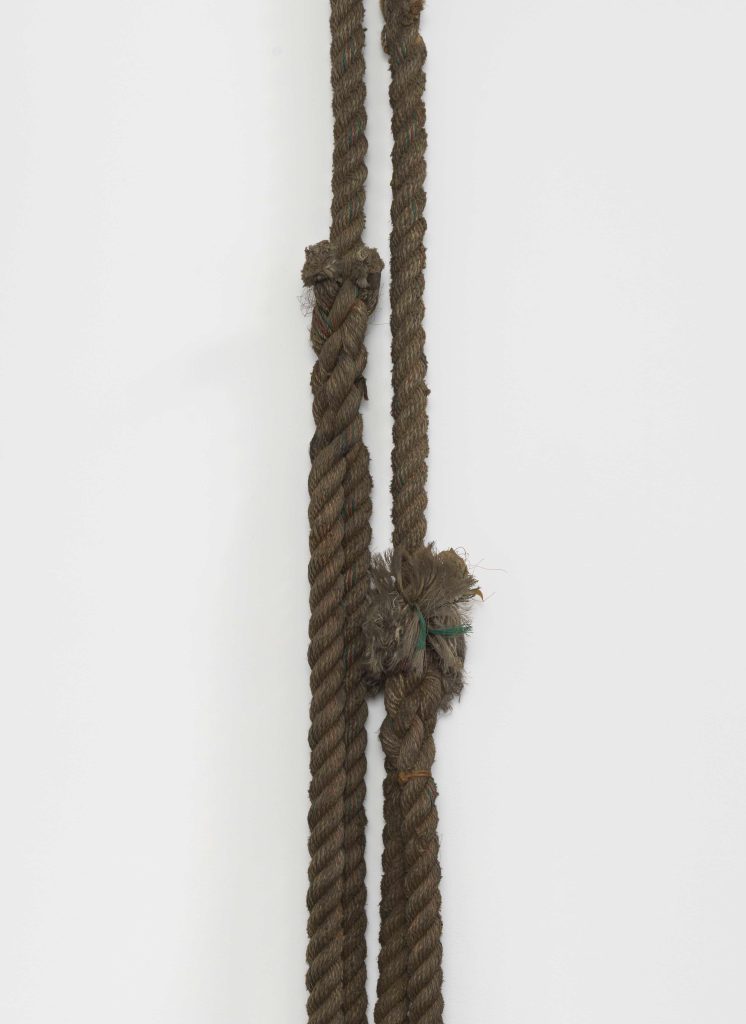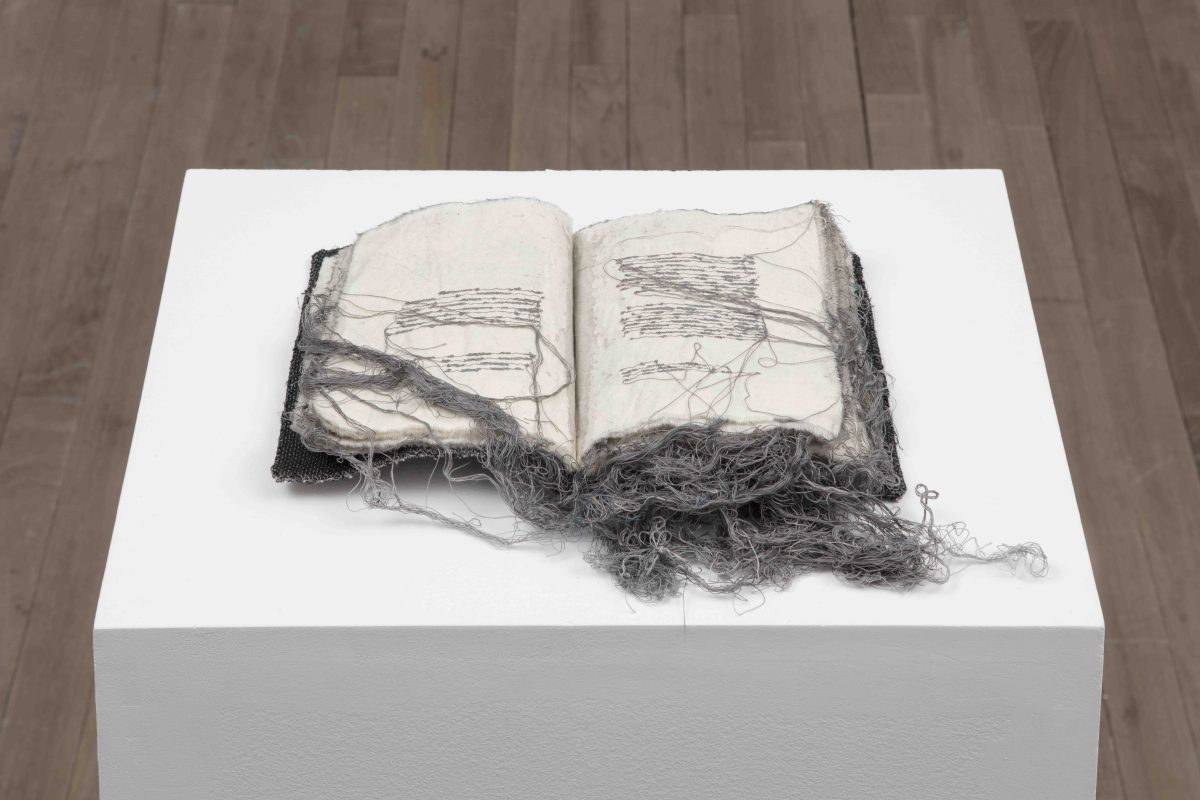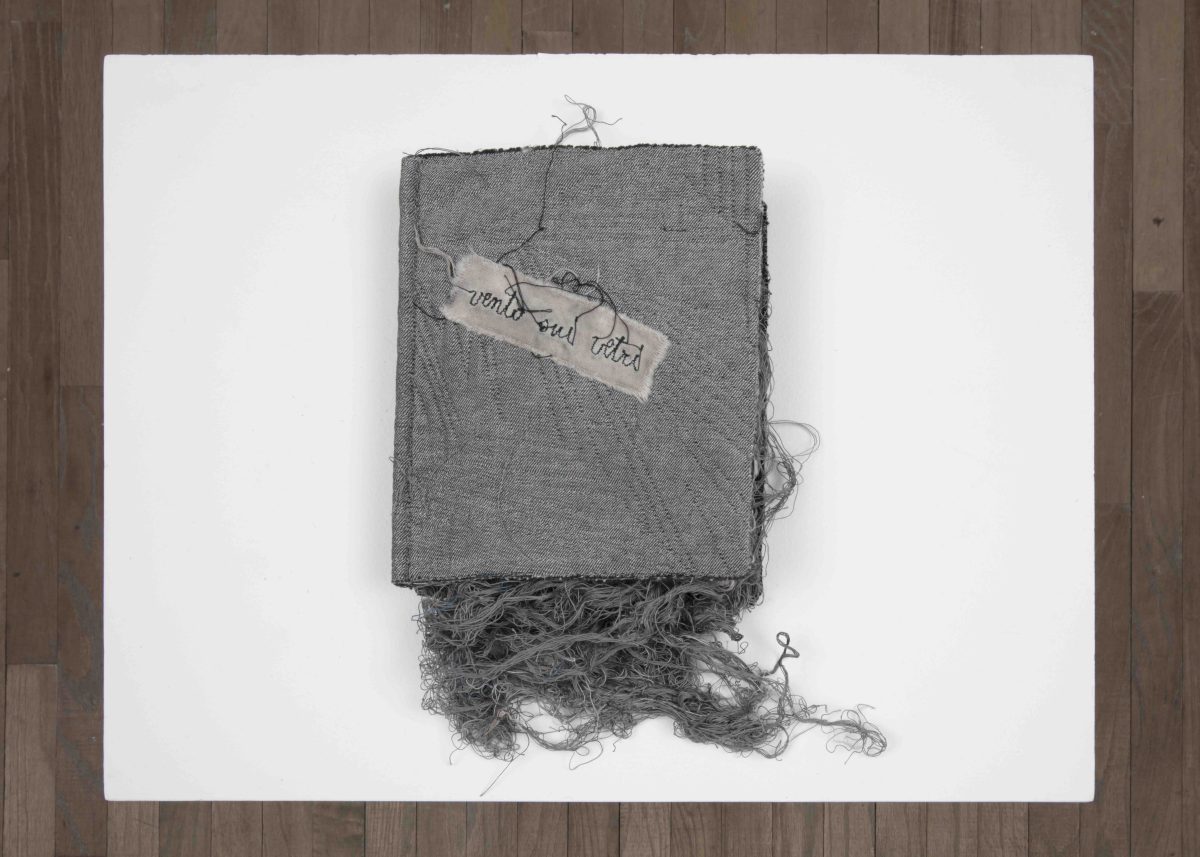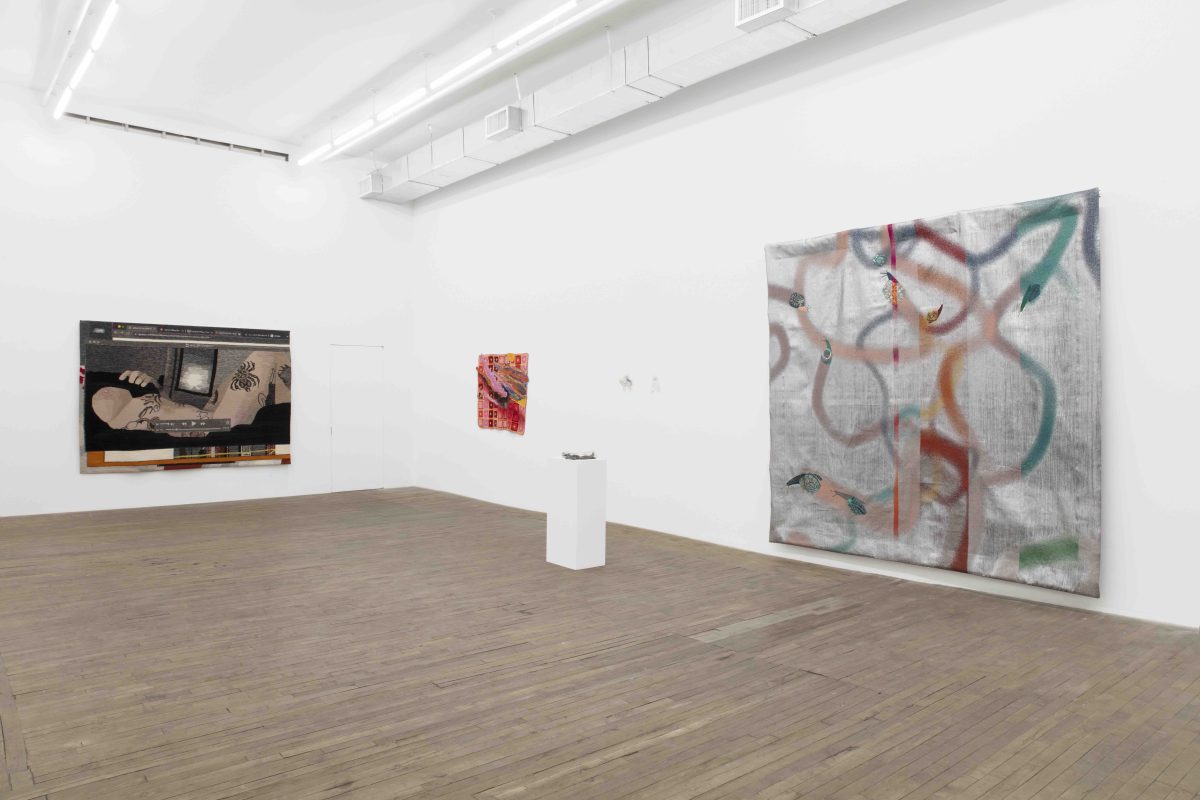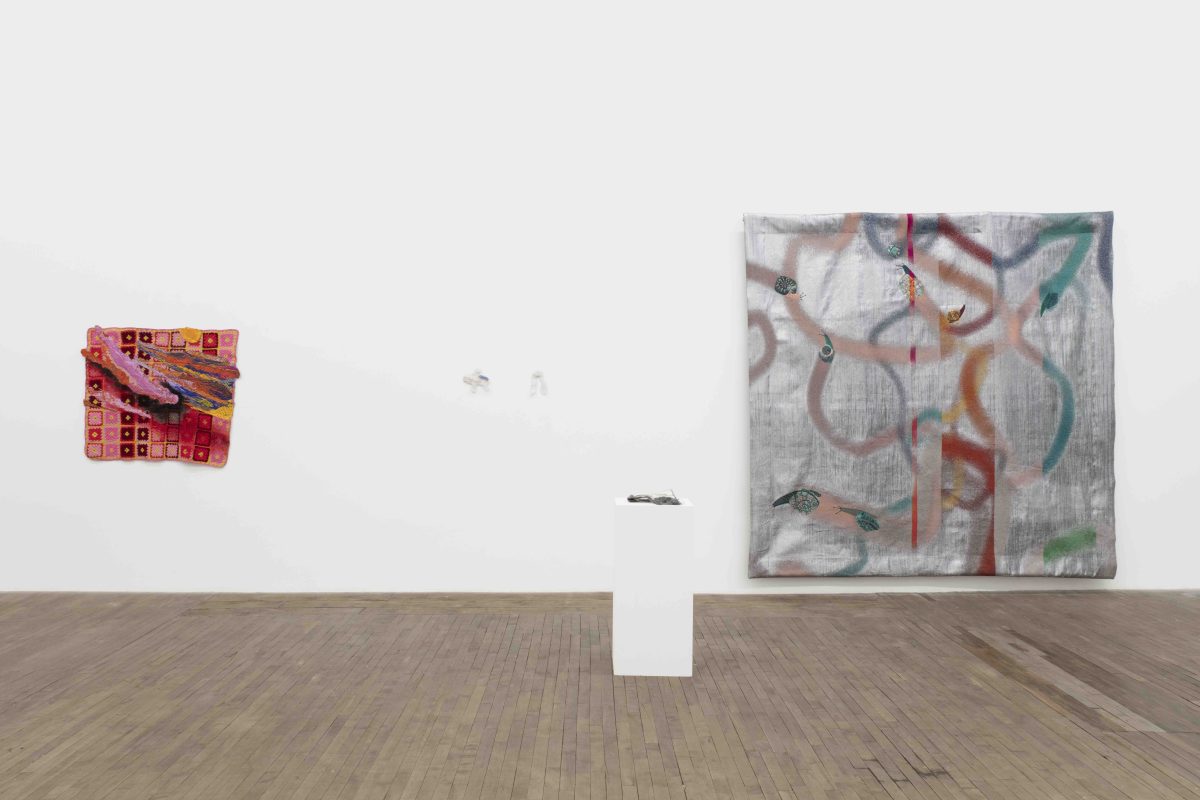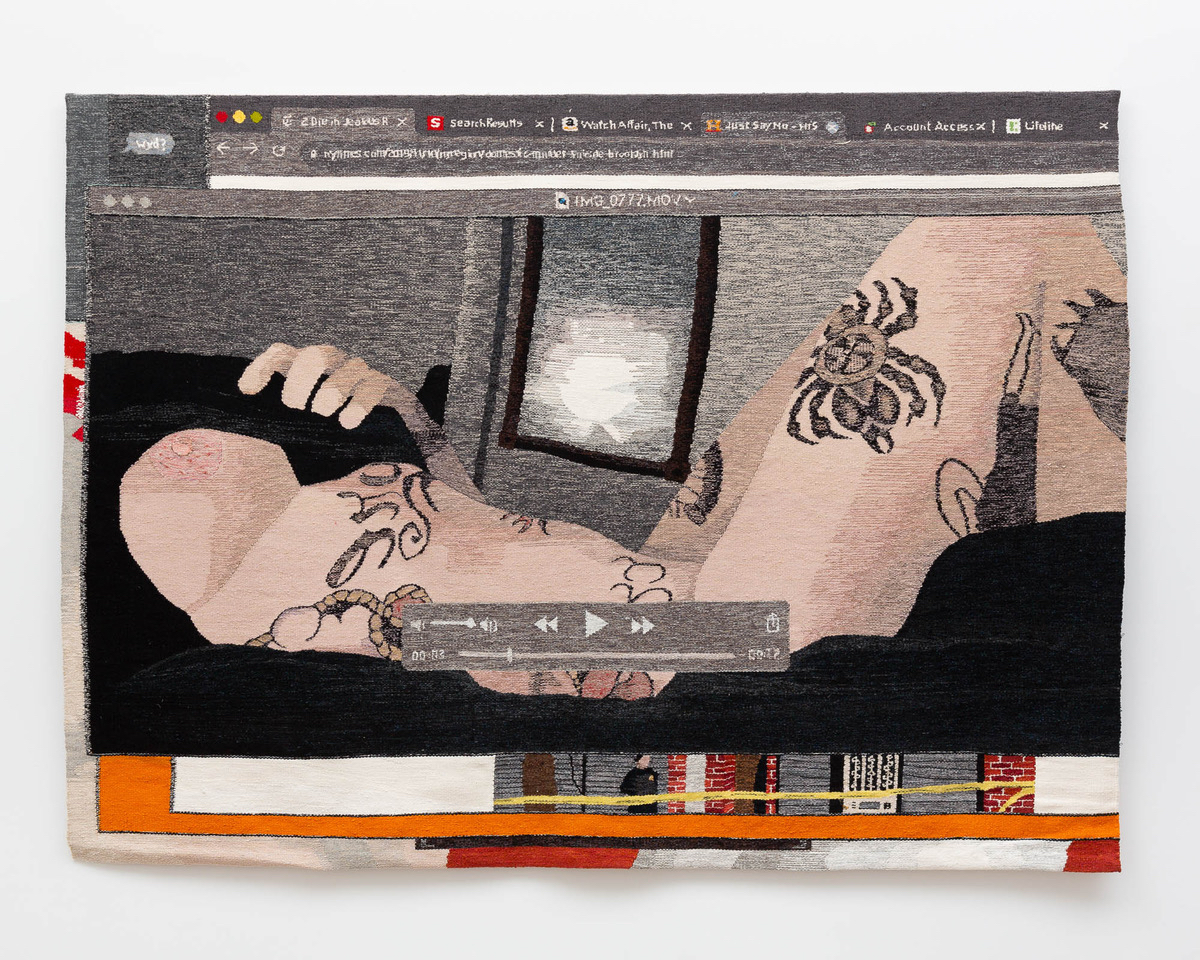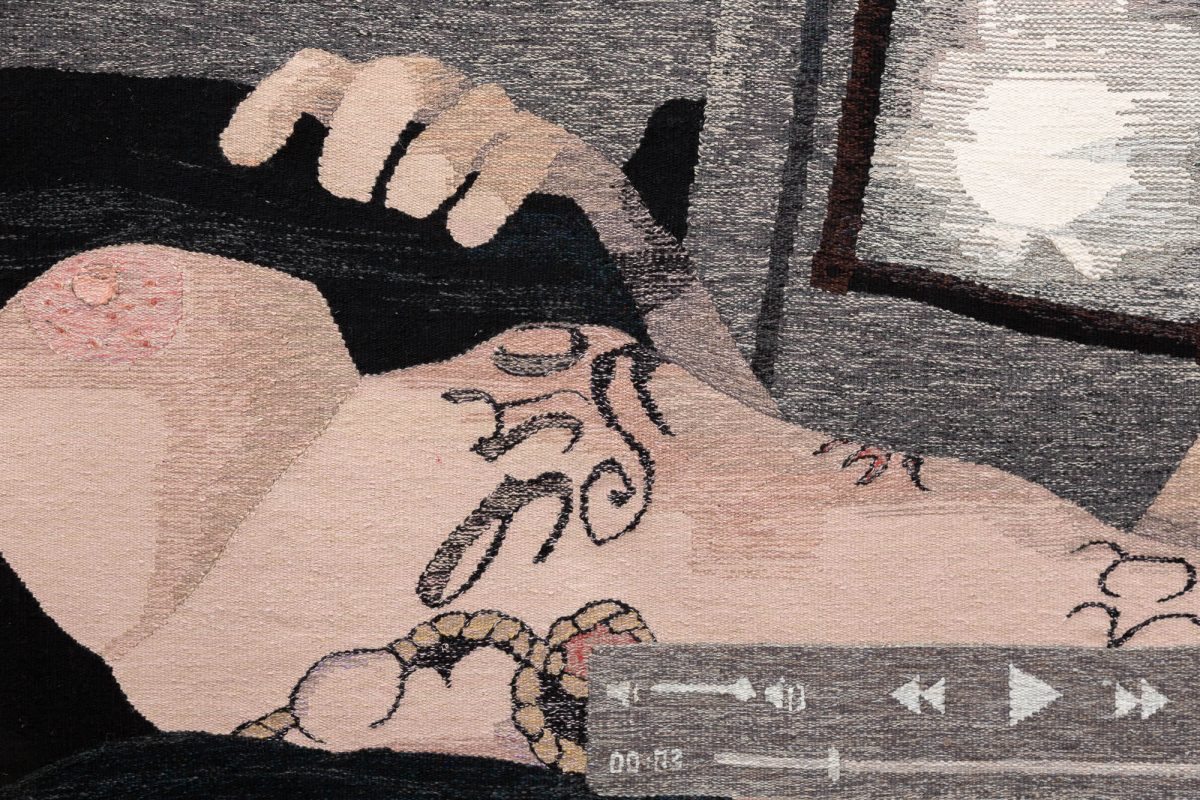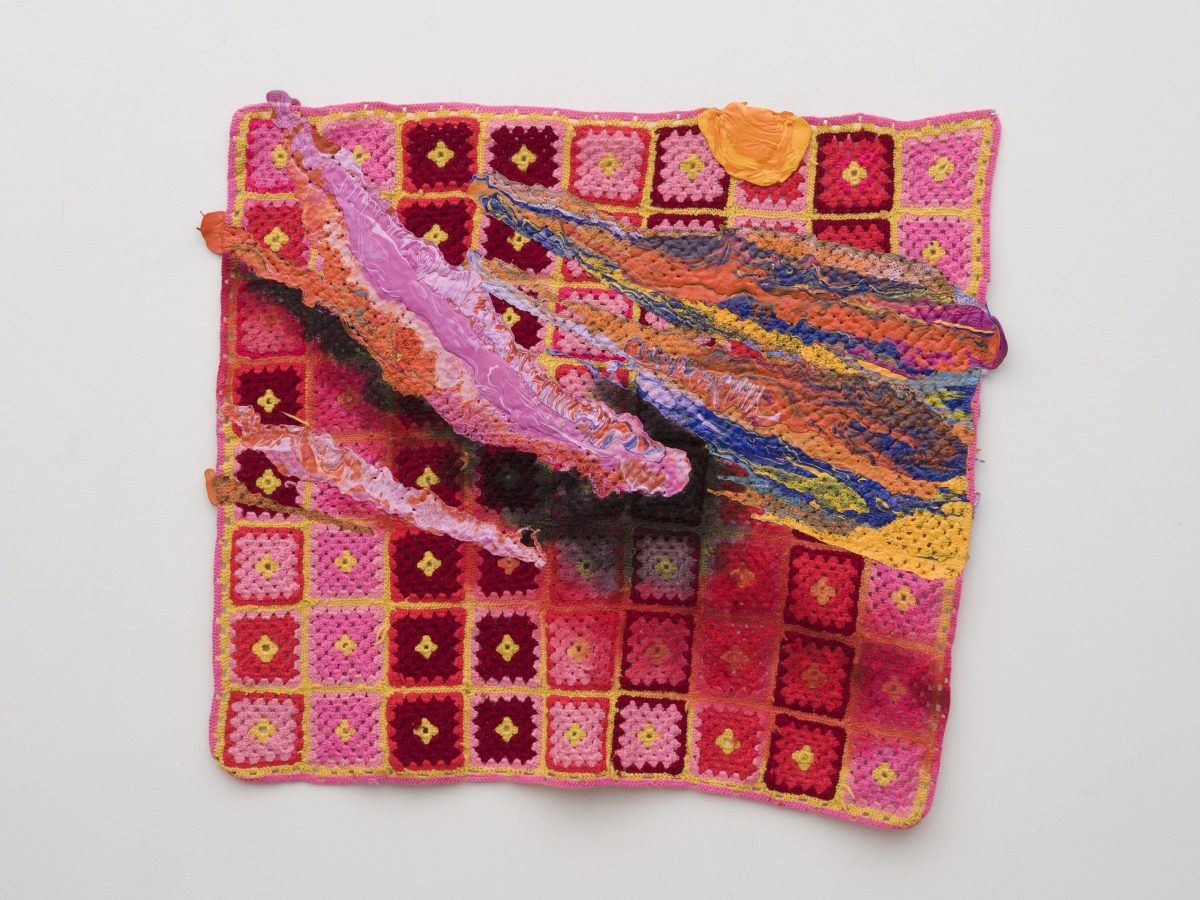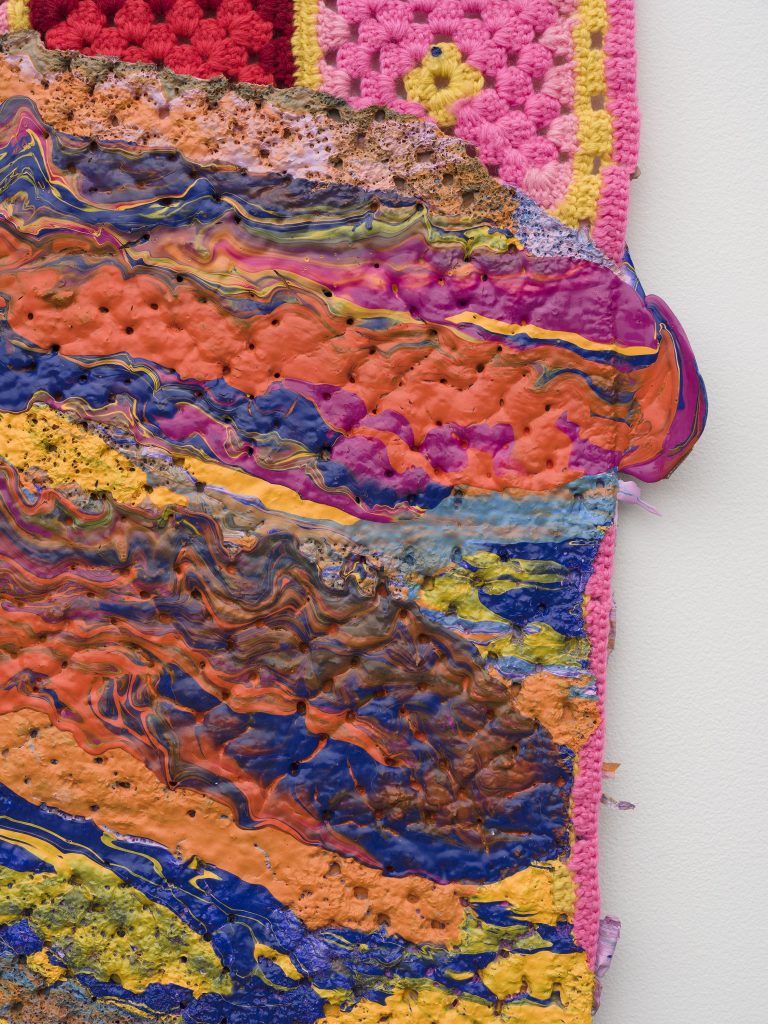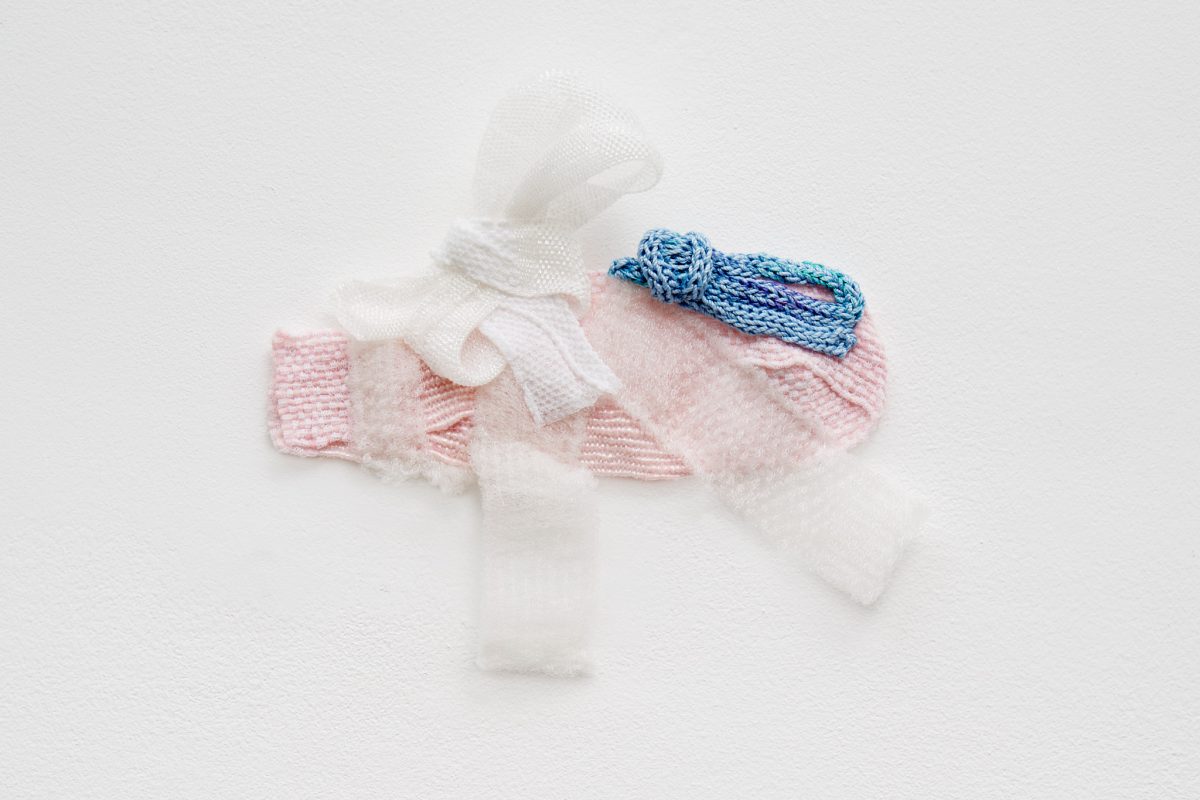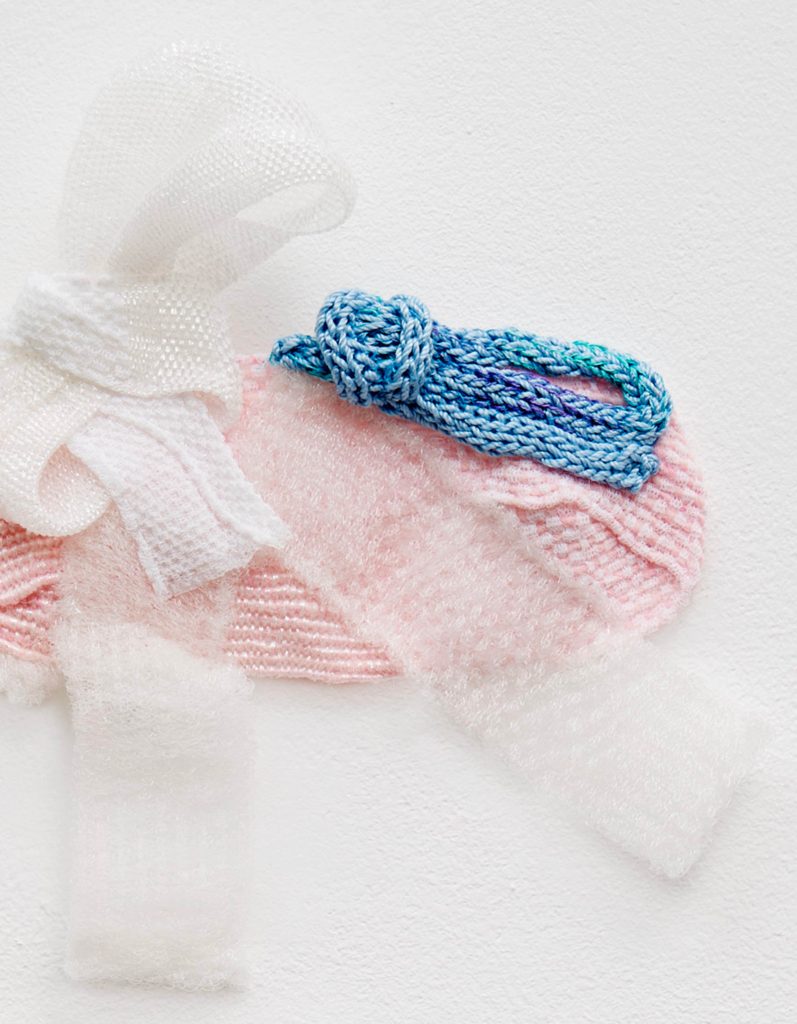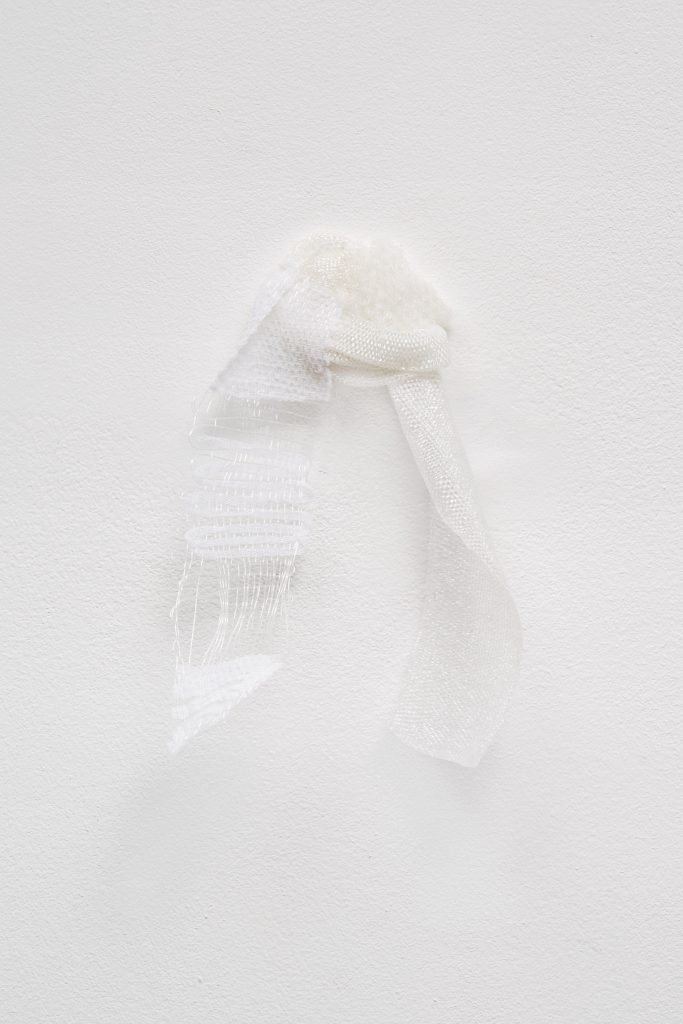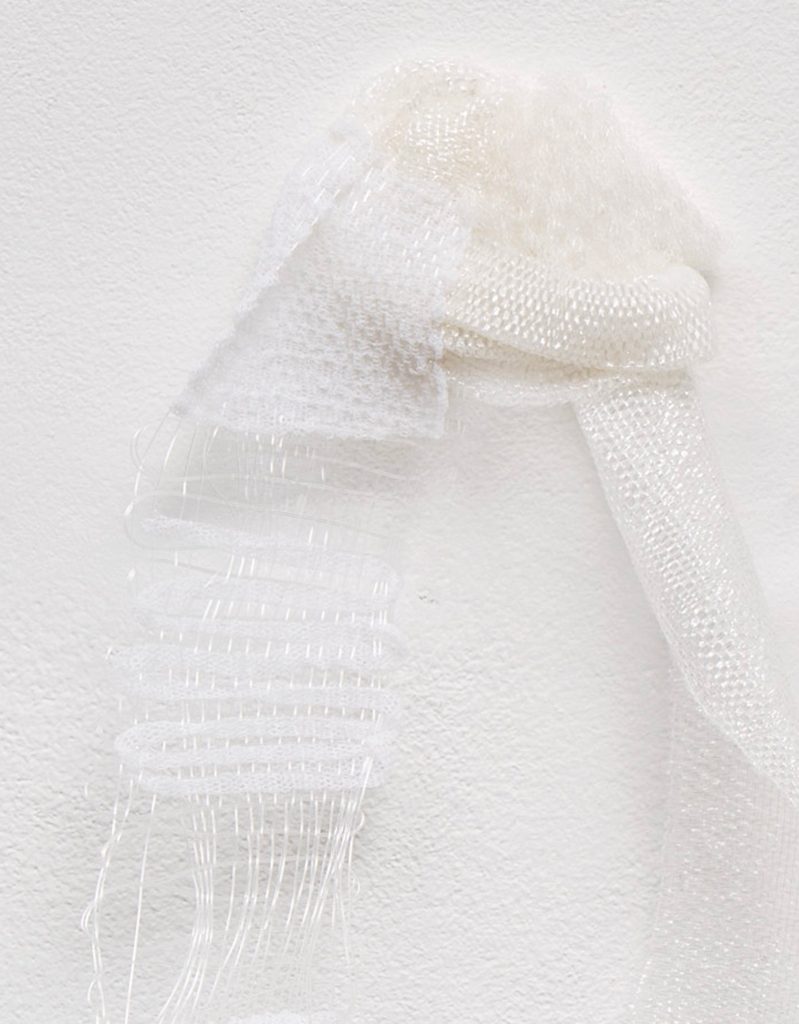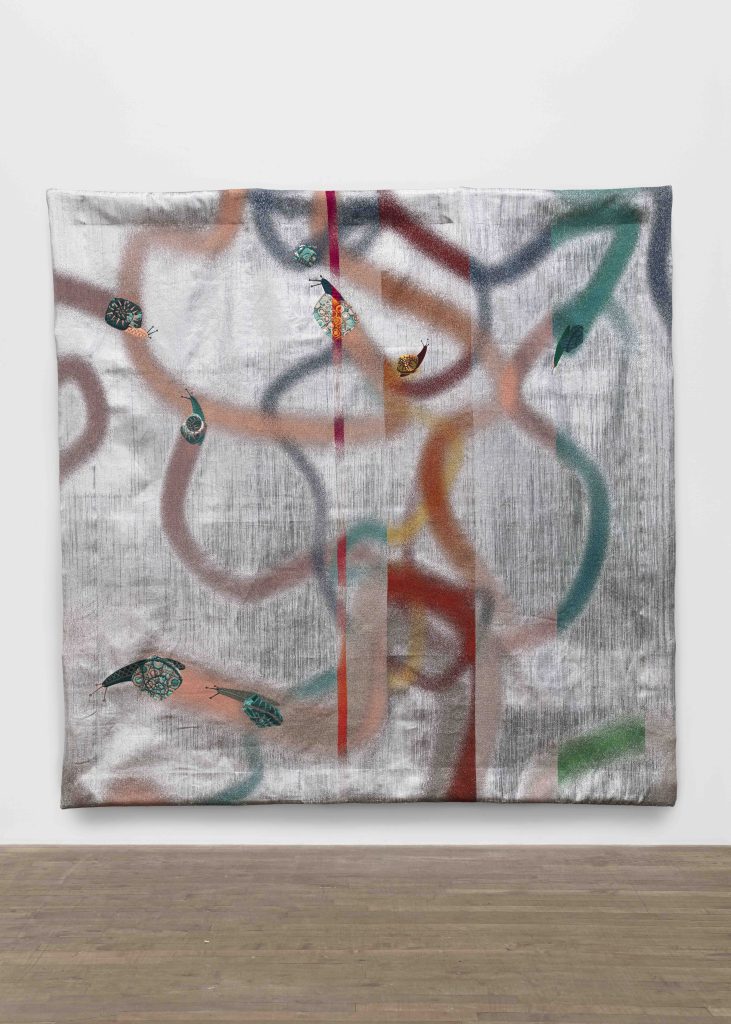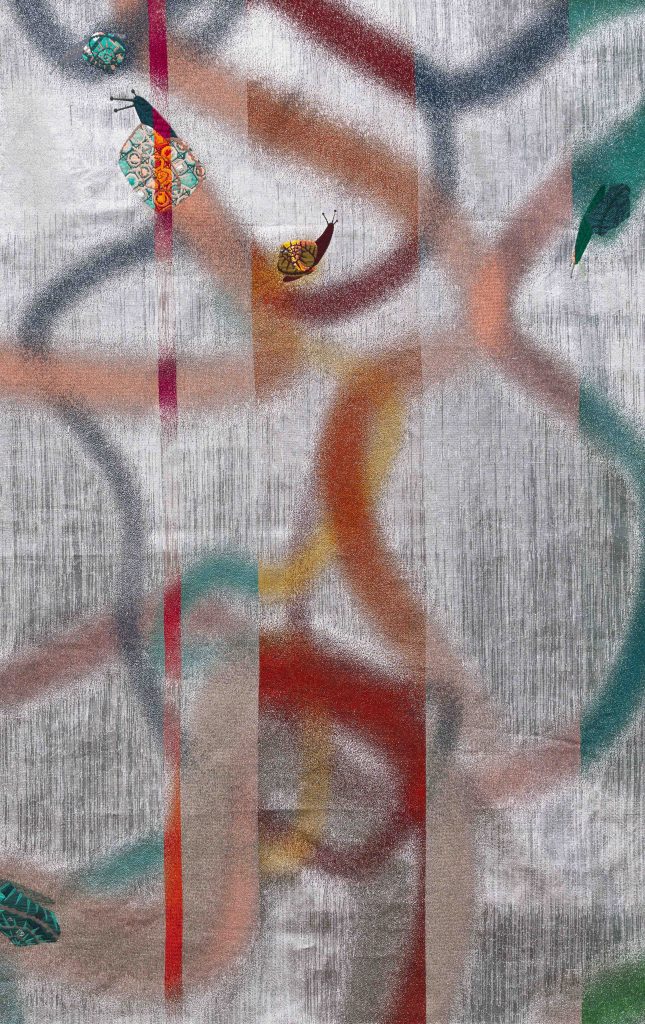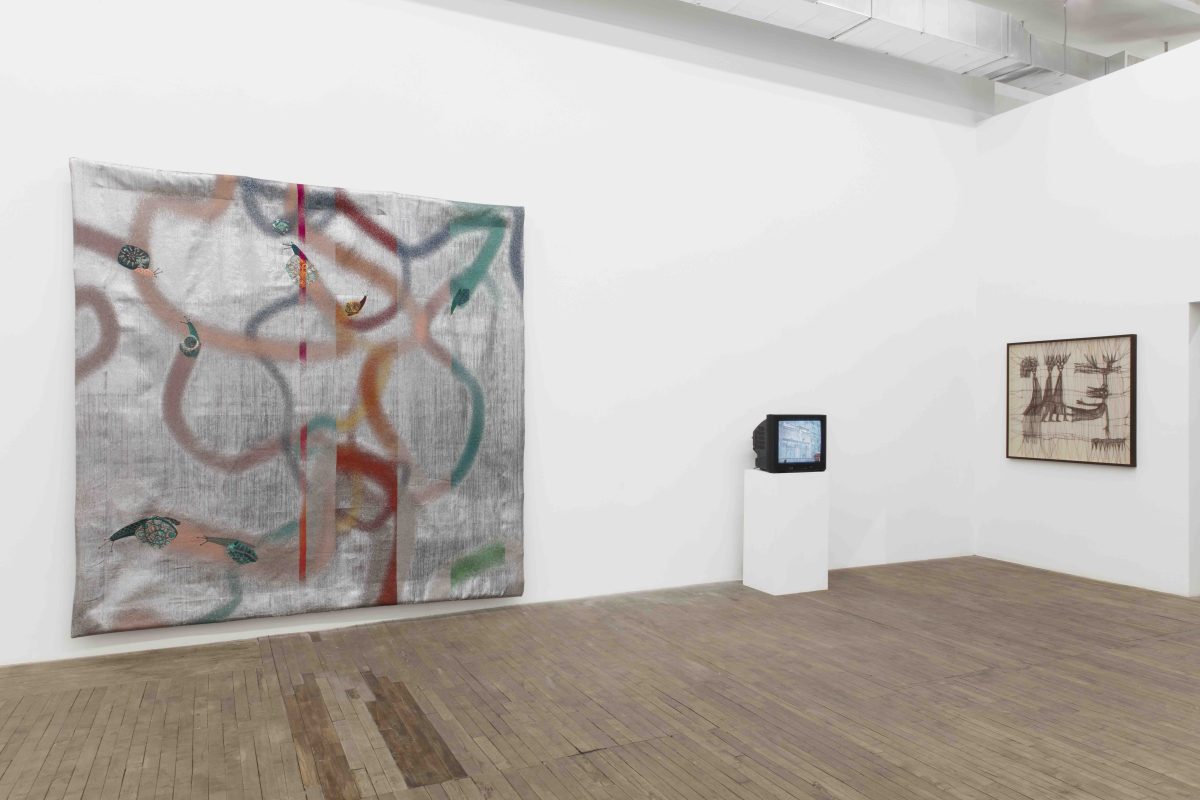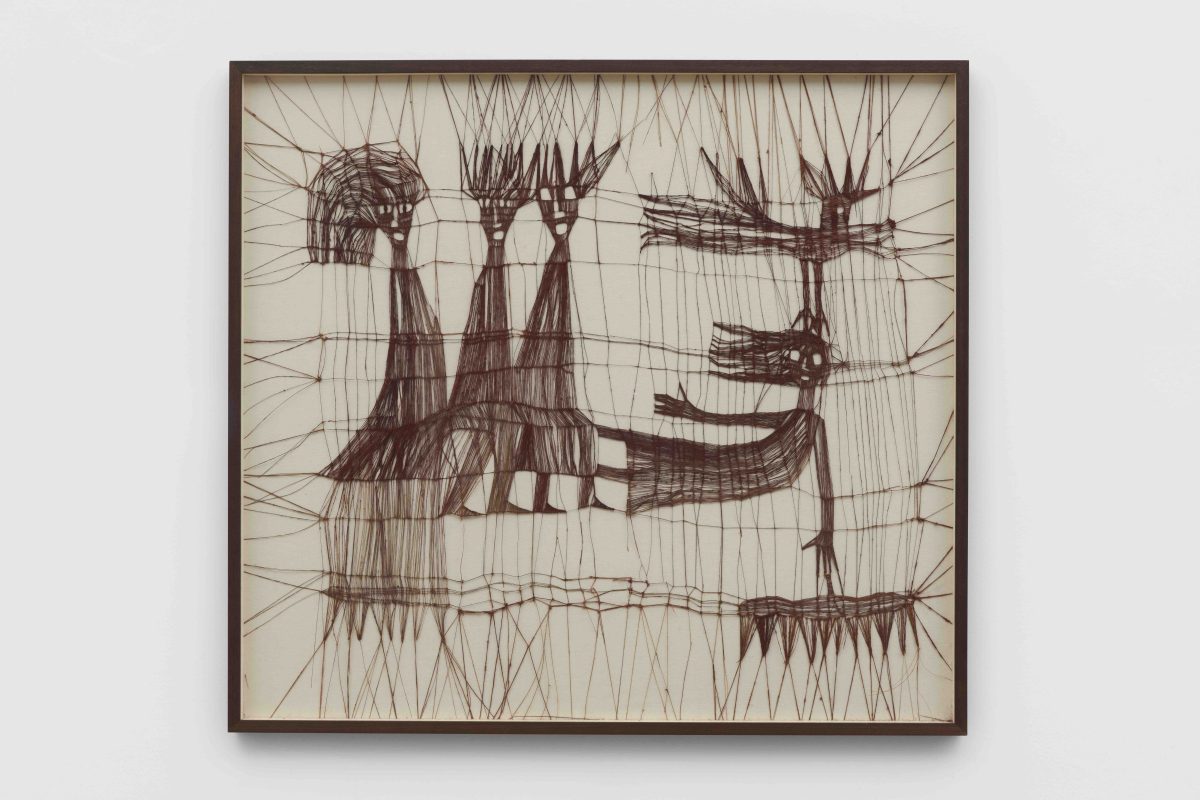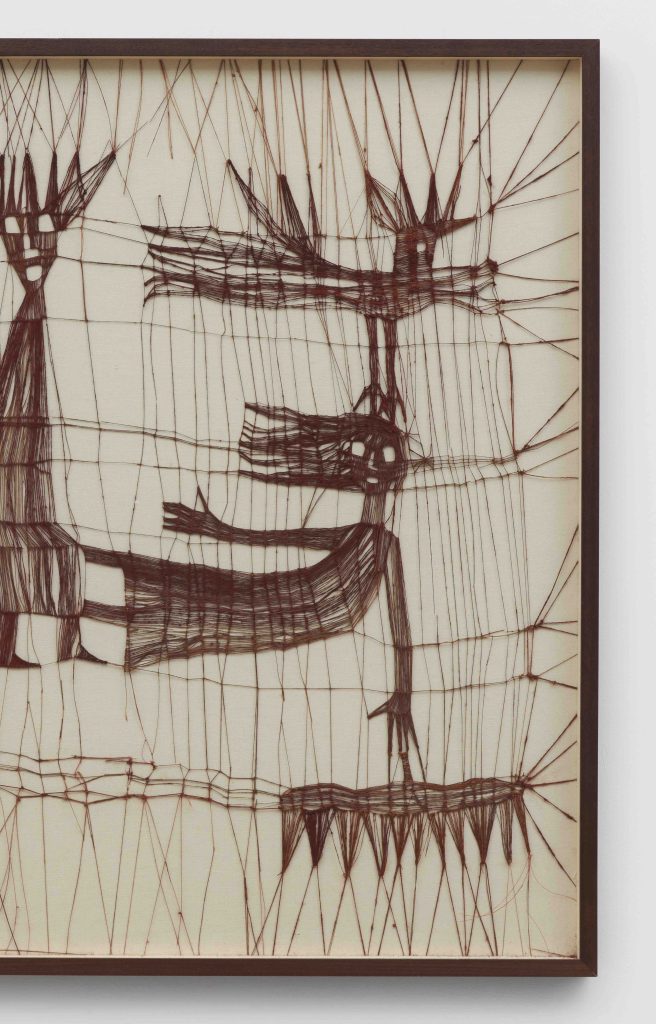
- This event has passed.
kaufmann repetto is pleased to present Re-materialized: The Stuff That Matters, a group exhibition curated by Astrid Welter, spanning across both Milan and New York galleries. This dual-presentation features the work of Lisa Alvarado, Maja Bajevic, Jonathan Baldock, Leda Catunda, Christina Forrer, Jeffrey Gibson, Françoise Grossen, Yee I-Lann, Suzanne Jackson, Charlotte Johannesson, Luba Krejčí, Maria Lai, Barbara Levittoux-Świderska, Rodney McMillian, Hana Miletić, Małgorzata Mirga Tas, Rosita and Angela Missoni, Dianna Molzan, Margherita Raso, Erin M. Riley, LJ Roberts, and Pae White. This project is in relation to an ongoing research program that kaufmann repetto has dedicated to the textile medium. To coincide with the current group show, the New York gallery will also feature a presentation of works by the late Italian textile designer Renata Bonfanti, marking the artist’s first solo exhibition in the United States.
Throughout the past decade, textile-based artworks have found a new currency in the artworld. A proliferation of exhibitions dedicated to this long-overlooked medium has generated an intensification of critical theory, reviewing a variety of viewpoints: the role of feminal practitioners and their refusal of outdated, gendered expectations; the bias of craft versus fine art; the relation of textiles to cultural identity, socioeconomic codes, and societal coexistence, amongst countless others. Many of these investigations are at the core of the practices of the artists featured in Re-materialized: The Stuff That Matters, presenting a spectrum of textile-based vocabularies.
The specific, tactile sensuousness of textile work fulfills our desire for re-materialized experiences. Now stuck somewhere between the physical and the virtual world, we are continuously witnessing the relentless digitalization of humanity, including sensory interactions. The more we realize the consequences of what is in fact dematerialization, the more urgency forms for resistance, together with the desire for a tangible, somatic connection to the world that surrounds us. If taken literally, we may begin to grasp the notion that nothing encompasses us more intimately through our bodily existence than cloth, one of the world’s most ancient cultural materials.
The title of the exhibition pays homage to Lucy Lippard and Seth Siegelaub, both pioneering curators and writers who in their early careers contributed to the definition and emergence of Conceptual Art. “Re-materialization” takes a playful twist on Lippard’s seminal text, “The Dematerialization of Art” (1968), an essay that has since become a cornerstone in art criticism and theory. “The Stuff That Matters” refers to Siegelaub’s decades-long bibliographic research on textiles and their social and economic history in the world, which eventually led to the activities of his Stichting Egress Foundation. Despite their different trajectories, both scholars and their ideologies have been central to contemporary art discourse, defying “the sacrosanct ivory walls and heroic, patriarchal mythologies” (Lippard, 1973). With the newly gained prevalence for textile art and the boundless examination of these handcrafted works as powerful carriers of a political and societal materiality, Lippard’s and Siegelaub’s legacy continues.
* The essay, co-authored by Lucy Lippard and John Chandler, is published in Lucy Lippard, Six Years: The Dematerialization of the Art Object from 1966 to 1972 (New York: Praeger, 1973)
* See also The Stuff That Matters. Textiles collected by Seth Siegelaub for the Centre for Social Research on Old Textiles, curated by Sara Martinetti, Alice Motard and Alex Sainsbury, Raven Row, London, 1 March – 6 May 2012
kaufmann repetto è lieta di presentare Re-materialized: The Stuff That Matters, una collettiva a cura di Astrid Welter ospitata in entrambe le sedi della galleria di Milano e New York. Il duplice allestimento include opere di Lisa Alvarado, Maja Bajevic, Jonathan Baldock, Leda Catunda, Christina Forrer, Jeffrey Gibson, Françoise Grossen, Yee I-Lan, Suzanne Jackson, Charlotte Johannesson, Luba Krejčí, Maria Lai, Barbara Levittoux-Świderska, Rodney McMillian, Hana Miletić, Małgorzata Mirga Tas, Rosita e Angela Missoni, Dianna Molzan, Margherita Raso, Erin M. Riley, LJ Roberts e Pae White. Il progetto è parte di un programma di ricerca di kaufmann repetto, incentrato sul medium tessile. Parallelamente, la galleria di New York presenta una mostra con opere di Renata Bonfanti, prima personale in America della designer di tessuti italiana.
Negli ultimi dieci anni le opere tessili hanno suscitato un nuovo interesse da parte del mondo dell’arte. Il proliferare di mostre dedicate a questo medium, a lungo trascurato, ha innescato un’intensificazione della teoria critica che riesamina numerosi aspetti, fra cui: il ruolo delle artiste del tessile e il rifiuto di assecondare obsolete aspettative di genere; il preconcetto che contrappone l’approccio artigianale alle ‘belle arti’; il rapporto del tessile con i codici di identità culturale e socio-economici, quindi con la coesistenza sociale. Queste indagini sono al centro delle pratiche delle artiste e degli artisti che partecipano a Re-materialized: The Stuff that Matters, presentando un’ampio spettro di vocabolari incentrati sul tessuto.
La sensualità tattile, specifica delle opere tessili, soddisfa il nostro desiderio di esperienze “ri-materializzate”. In un equilibrio precario tra il mondo fisico e quello virtuale, assistiamo continuamente all’inarrestabile digitalizzazione dell’umanità, incluse le interazioni sensoriali. Più diventiamo consapevoli delle conseguenze di quella che di fatto è una dematerializzazione, più cresce la necessità di una resistenza, insieme al desiderio di un legame tangibile e somatico con il mondo circostante. Se inteso in senso letterale, ci rendiamo conto che nella nostra esistenza corporea, nulla ci avvolge più intimamente del tessuto, uno dei materiali culturali più antichi.
Il titolo della mostra è un omaggio a Lucy Lippard e Seth Siegelaub, curatori e autori pionieri, che fin dall’inizio delle loro carriere hanno contribuito a definire e sviluppare l’arte concettuale. Il termine “Ri-materializzazione” offre una rilettura giocosa di The Dematerialization of Art (1968)1 (La dematerializzazione dell’arte), saggio fondamentale di Lippard che rappresenta oggi una pietra miliare della critica e teoria dell’arte. “La materia che conta” rimanda invece alla ricerca bibliografica di Siegelaub, durata decenni, sui tessuti e sulla loro storia economico-sociale nel mondo, che ha condotto alle attività della sua Stichting Egress Foundation. Nonostante abbiano seguito traiettorie diverse, entrambe le figure e le relative ideologie sono state cruciali nel dibattito artistico contemporaneo, sfidando “le sacrosante mura d’avorio e le mitologie eroico-patriarcali” (Lippard, 1973). Il lascito di Lippard e Siegelaub prosegue quindi grazie alla nuova diffusione dell’arte tessile e all’esame sconfinato di tali opere realizzate a mano, considerate potenti vettori di una materialità socio-politica.
- *Il saggio di Lucy Lippard con John Chandler, è pubblicato in Lucy Lippard, Six Years: The Dematerialization of the Art Object from 1966 to 1972 (New York: Praeger, 1973)
- * Si veda anche The Stuff That Matters. Textiles collected by Seth Siegelaub for the Centre for Social Research on Old Textiles, curato da Sara Martinetti, Alice Motard e Alex Sainsbury, Raven Row, Londra, 1 marzo – 6 maggio 2012

